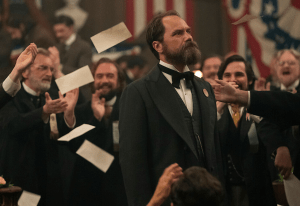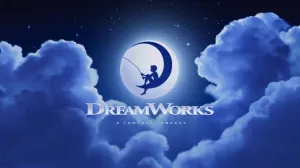Star Wars has always been at the forefront of revolutionizing visual effects technology, and one of the more significant innovations in recent years has been The Volume. Helping usher in a new age of virtual productions, The Volume allows filmmakers to display various backgrounds on HD screens, allowing them to shoot a scene taking place in the desert one minute and the arctic the next — all from the comfort of a soundstage. First gaining notoriety on Star Wars: The Mandalorian, The Volume is a very useful tool that helps blend practical and digital elements. However, some have been critical of StageCraft, feeling it’s too restrictive to continuously shoot sequences on a stage, where movement of camera and actors is limited to a confined space. It looks like Lucasfilm is addressing those complaints with its new movie.
Videos by ComicBook.com
Star Wars: Starfighter director Shawn Levy took to Instagram to share an image of stars Ryan Gosling and Flynn Gray on location in the Mediterranean Sea. The two actors are on some sort of watercraft sailing on what will likely be some kind of ocean planet in the final product. Check out the photo in the space below:
Star Wars Is Embracing Shooting On Practical Locations
Following The Mandalorian, a number of other Lucasfilm productions made extensive use of The Volume, including Star Wars: Obi-Wan Kenobi and Star Wars: Ahsoka Season 1. While the studio will undoubtedly continue to utilize it for future movies and TV shows (like next summer’s The Mandalorian & Grogu), there seems to be a concentrated effort to incorporate different filming styles during shooting. For example, Ahsoka Season 2 is reportedly filming in the United Kingdom, allowing the creative team to experiment with various techniques.
On Starfighter, Levy seems to be taking a page out of Tony Gilroy’s book. The critically acclaimed series Star Wars: Andor was notably the first live-action Star Wars show to not use The Volume during production, instead choosing to shoot on locations and larger, practical sets. There are many reasons why Andor is one of the best Star Wars projects of all time, and the show’s production design is certainly a highlight. Andor demonstrated the benefits of practical locations, as the episodes had a grand scale and felt cinematic.
As a modern-day Star Wars film, Starfighter will have plenty of digital effects and could even make use of The Volume. But it’s great to see Levy and crew put in the extra work to shoot on the water. The behind-the-scenes still the director shared is visually stunning, and the final scene will likely look even better on the big screen. Plus, filming on a real location like this can allow for a more dynamic sequence. The actors can actually interact with their environment since they’re out there on the water and not just sitting in front of screens. Levy will have the freedom to move his camera around from a variety of angles to get the perfect shot. Anyone who’s seen Jaws will tell you how challenging it is to shoot in the water, but nothing beats seeing the locations on screen for real. Audiences can tell the difference between The Volume and practical locations.
Star Wars: Starfighter is an important project for Lucasfilm. Attracting big names like Gosling and Amy Adams to the cast, the film will be a great testing ground for the studio’s new Star Wars movie strategy. Kathleen Kennedy seems ready to open the franchise up to allow filmmakers to come in and tell standalone stories that don’t necessarily have to be connected to everything that came before. Starfighter is being positioned as a one-off, and its success will go a long way in determining what kinds of Star Wars movies get off the ground next. Fully immersing the audience in the galaxy far, far away by highlighting the scope of real locations could go a long way in helping Starfighter make a huge impact.
What do you think? Leave a comment below and join the conversation now in the ComicBook Forum!









